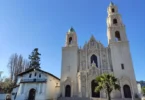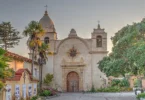Introduction
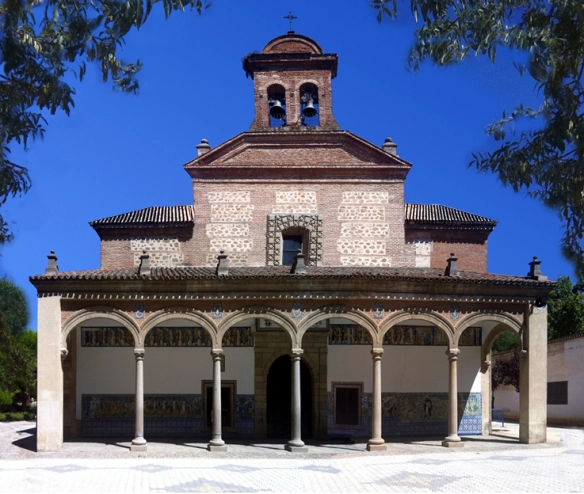
The Basilica of Nuestra Señora del Prado, known in Spanish as the Basílica de Nuestra Señora del Prado, is a prominent Roman Catholic basilica located in Talavera de la Reina, a historic city in the province of Toledo, Spain. This magnificent religious structure is dedicated to the Virgin of the Meadow (Virgen del Prado), who holds the distinguished role of patron saint of the city. As a revered site of Marian devotion, the basilica not only serves as a center of worship but also stands as an emblem of Talavera’s cultural and religious heritage. Recognized for its historical and architectural significance, the basilica enjoys the status of a Bien de Interés Cultural (Site of Cultural Interest), reflecting its importance as a protected monument within Spain’s rich tapestry of cultural landmarks.
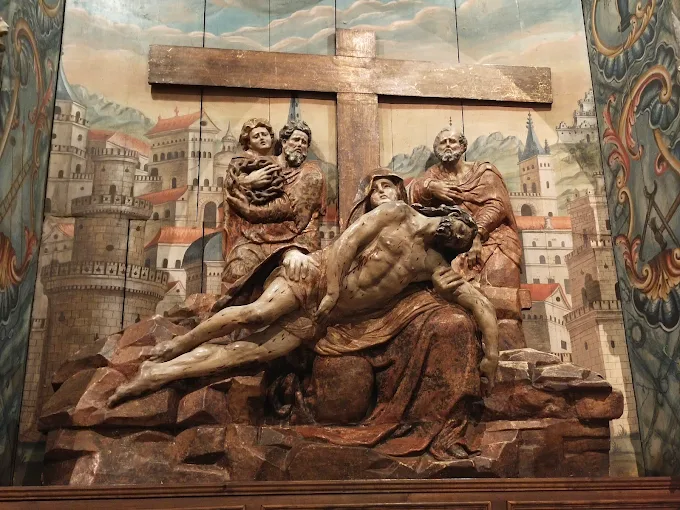
Ancient Origins and Pagan Worship
The sacred significance of the site on which the Basilica of Nuestra Señora del Prado now stands can be traced back to Roman times. Situated on the outskirts of the ancient Roman settlement of Caesarobriga (present-day Talavera de la Reina), the location was originally home to a pagan temple dedicated to protective deities associated with agriculture and livestock, such as Pales and Ceres. These deities were honored with festive rituals and celebrations, traditions that are widely believed to have evolved into the modern-day Mondas festivals, one of Talavera’s most emblematic cultural events.
Christianization in the Visigothic Period
With the rise of Christianity during the Visigothic era, the site was transformed into a place of Christian worship. According to the most accepted tradition, it was King Liuva II who gifted the original image of the Virgen del Prado to the city, establishing her as a spiritual protector of the people. Some historical accounts even suggest that Christian worship persisted at the site during the period of Muslim rule, likely in the form of a modest hermitage, maintaining its religious continuity.
Reconstruction After the Reconquista
Following the Christian Reconquest of the region, the temple underwent significant architectural transformation. A new building was constructed in the Mudejar style, a reflection of the cultural fusion typical of post-Reconquest Spain. It is believed that during this period, the current image of the Virgen del Prado was introduced, replacing the earlier representation gifted by Liuva II.

Renaissance Development in the 16th Century
In the 16th century, the existing Mudejar structure was replaced by a more elaborate temple built in the Renaissance style. This construction forms the oldest preserved section of the present basilica, extending from the foundation up to the presbytery grille. The grandeur and elegance of the building led King Philip II to famously refer to it as the “queen of hermitages,” highlighting its architectural and devotional prominence.
Baroque Renovation in the 17th Century
A major transformation occurred in 1649, when the basilica underwent a comprehensive renovation led by the renowned architect and friar Lorenzo de San Nicolás. This phase added the main chapel and the iconic dome, both of which are defining features of the structure’s current silhouette. These changes marked the culmination of the basilica’s evolution into the impressive edifice seen today.
19th Century Restoration After French Invasion
During the early 19th century, the basilica suffered damage amid the chaos of the French invasion of Spain (part of the Peninsular War). To address this, a restoration project was undertaken in 1855, aimed at preserving the building’s historical and artistic integrity.
20th Century Recognitions and Elevation to Basilica
The basilica’s spiritual and cultural importance was officially acknowledged in the 20th century. In 1956, Pope Pius XII issued a papal bull granting the canonical coronation of the image of the Virgen del Prado, solidifying her status as a revered figure in Marian devotion. Later, in 1989, Pope John Paul II signed another papal bull elevating the church from a hermitage to the dignity and status of a Minor Basilica, a recognition of its deep-rooted significance in the Catholic tradition and its enduring legacy in Spanish religious life.
Architecture of Basilica of Our Lady of the Prado, Talavera de la Reina, Spain
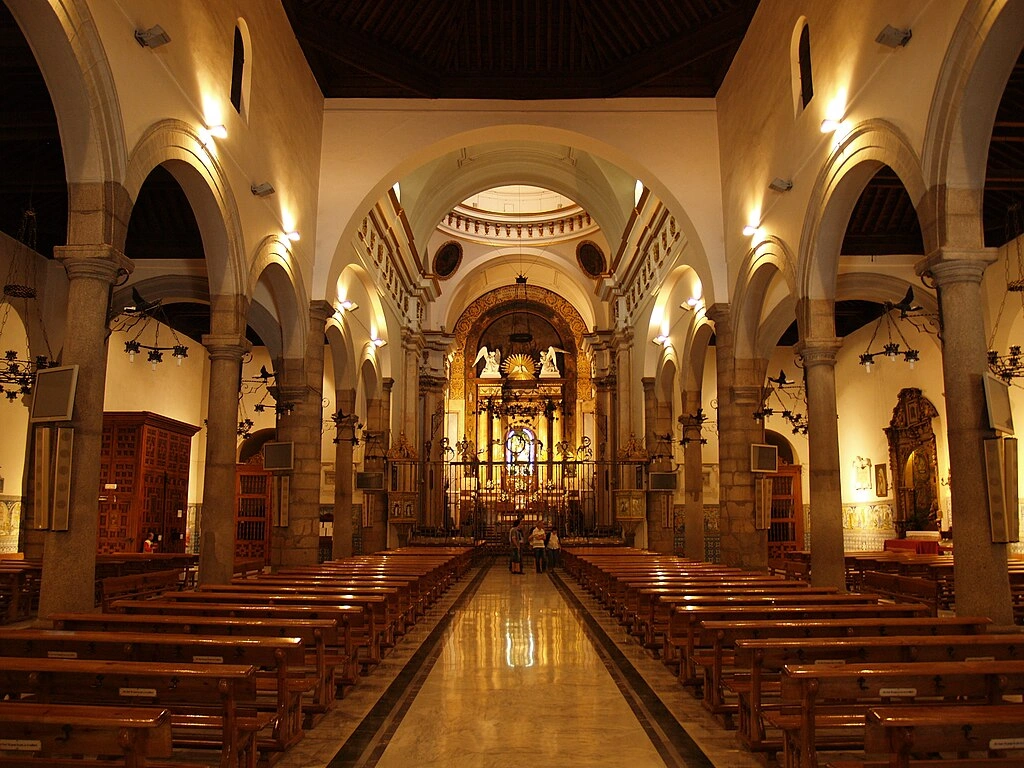
Architectural style : Baroque architecture
Architectural Style and Layout
The Basilica of Nuestra Señora del Prado presents a harmonious blend of Renaissance and Baroque architectural styles, reflecting the various stages of construction and renovation that shaped its current form. The main chapel follows a Latin cross floor plan, with its two arms covered by barrel vaults with lunettes. At the intersection of the nave and transept, a large coffered dome rises majestically, supported by an octagonal drum and crowned with a lantern, which allows natural light to filter into the sacred space. The structure is richly decorated with pillars, capitals, and plaster entablatures, contributing to the classical elegance of the basilica’s interior. The Baroque section, including the dome and main chapel, is seamlessly connected to the three Renaissance naves at the foot of the church. These naves are covered with octagonal trough vaults and are separated by semicircular arches resting on Tuscan columns, which add a sense of rhythm and solidity to the space.
Key Interior Features
At the rear of the church stands the choir loft, raised above a large basket-handle arch, providing both visual interest and acoustic benefits for liturgical music. One of the most sacred areas is the alcove of the Virgin, located at the chevet (the head of the church), which is sheltered under an oval dome, creating an intimate space for prayer and devotion.
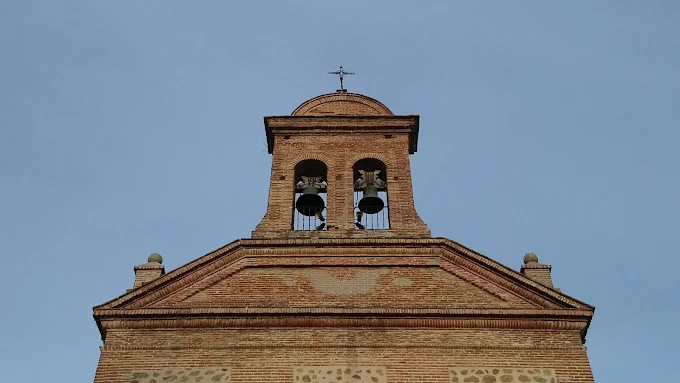
Exterior Architecture
The basilica’s exterior is no less impressive. The main chapel’s vertical proportions dominate the façade, enhanced by brick cornices and pediments that emphasize its grandeur. A notable feature is the spacious portico, supported by Tuscan stone columns and featuring low arches, creating a welcoming entrance for worshippers and visitors alike. Above the portico rises a brick bell gable, contributing to the church’s distinctive silhouette.
Artistic Heritage: Talavera Ceramics
Historic Ceramic Decorations
The Basilica of Nuestra Señora del Prado is distinguished not only by its architectural grandeur but also by its extraordinary collection of ceramic decorations, which represent one of the finest achievements of Talavera’s centuries-old artistic tradition. Spanning a period from the 16th to the 20th centuries, these ceramic works are of immense artistic and cultural value, intricately tied to Talavera de la Reina’s historic reputation as a premier center of ceramic production. Among the most remarkable features are the 17th-century ceramic panels that adorn the interior plinths of the side aisles, regarded as a pinnacle of Talavera ceramic artistry. These pieces were created during a time when Talavera ceramics enjoyed great acclaim both within Spain and across the Spanish colonial territories, recognized for their vibrant colors, detailed narrative scenes, and superior craftsmanship. On the Gospel side of the basilica, the ceramic tiles illustrate the genealogy of Christ, presenting a detailed visual lineage of the Savior through elaborately composed, story-driven panels. Each figure is carefully stylized, reflecting both religious significance and artistic finesse. Opposite, on the Epistle side, the ceramic scenes portray significant moments from the life of the Virgin Mary, aligning closely with the basilica’s role as a Marian sanctuary. These depictions offer more than ornamental beauty—they serve as devotional and educational tools, inviting visitors to reflect on sacred history through a uniquely Talaveran artistic lens. Together, these ceramic decorations transform the basilica into a vivid, immersive tapestry of faith, history, and regional identity.
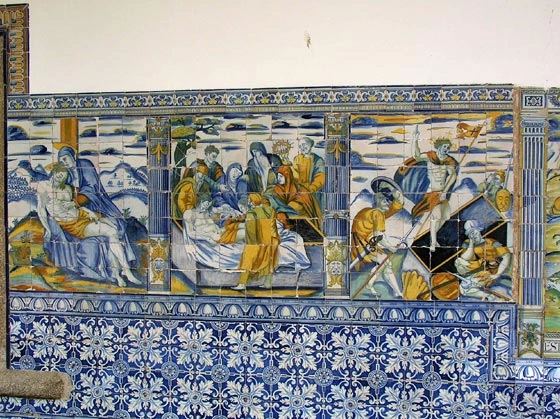
Artistic Influence and Origins
Art historians have linked the stylistic elements of some of these panels—especially the elongated features and expressive faces—to the school or apprentices of El Greco, suggesting a broader artistic influence within the region. Additionally, several 16th-century ceramic panels now housed in the basilica originated from the former church of San Antón, which has since disappeared. Of particular importance is the large ceramic altarpiece adorning the right side of the main chapel, a masterpiece of religious craftsmanship and an outstanding example of Talavera’s ceramic heritage.
Protection and Heritage Status
Site of Cultural Interest (Bien de Interés Cultural)
The Basilica of Nuestra Señora del Prado is officially designated as a Site of Cultural Interest (Bien de Interés Cultural), a protected status granted by Spanish heritage authorities due to its architectural, historical, and artistic significance.
Protected Area and Surroundings
The protected heritage zone of the Basilica of Nuestra Señora del Prado extends far beyond the church building itself, encompassing the entire expanse of the Prado Gardens, a historically and culturally significant urban park in Talavera de la Reina. These gardens form a clearly delineated area bordered by the Avenues of Extremadura, Salvador Allende, and Castilla-La Mancha, creating a natural and architectural frame for the basilica. This designation as a Site of Cultural Interest (Bien de Interés Cultural) includes not only the main religious structure but also a collection of auxiliary elements scattered throughout the gardens, each contributing to the overall historic landscape. Protected Structures: Among these protected features are several fountains and designated rest areas, public restrooms, decorative iron cages, elegant staircases, and gazebos, all of which reflect early 20th-century garden design. There is also a small classical-style temple, which adds a unique architectural touch to the green space. Botanical and Cultural Significance: The botanical diversity of the Prado Gardens plays a key role in the cultural value of the site, offering a peaceful and contemplative environment that complements the sacred function of the basilica. The carefully designed layout and plantings, many of which are of ornamental and historical interest, enhance the aesthetic and spiritual experience for visitors and worshippers alike, blending natural beauty with religious heritage in a setting that is both inviting and symbolically rich.
Ruiz de Luna Ceramics
Another notable feature of the protected ensemble is the contribution of Ruiz de Luna, one of Talavera’s most celebrated ceramic artists. His ceramic works decorate several buildings, benches, and decorative elements throughout the Prado Gardens, further enriching the cultural landscape surrounding the basilica
Feast Day
Feast Day : 08 September
The feast day of the Basilica of Our Lady of the Meadow (Nuestra Señora del Prado) in Talavera de la Reina, Toledo, is celebrated on September 8. It honors the Virgin of the Meadow, the city’s patron saint, with religious ceremonies and traditional festivities.
Church Mass Timing
Monday to Sunday : 11:00 AM, 12:00 PM, 8:00 PM
Church Opening Time:
Monday to Friday : 7:00 AM – 2:00 PM, 4:00 PM – 8:30 PM
Saturday to Sunday : 8:00 AM – 2:00 PM, 4:00 PM – 8:30 PM
Contact Info
Address : Basilica of Our Lady of the Prado
45600 Talavera de la Reina, Toledo, Spain.
Phone : +34 925 80 14 45
Accommodations
Connectivities
Airway
Basilica of Our Lady of the Prado, Talavera de la Reina, Spain, to El Tietar Airport CL-501, distance 43 min (46.8 km) via CM-5100.
Railway
Basilica of Our Lady of the Prado, Talavera de la Reina, Spain, to Estación de Talavera de la Reina, distance between 5 min (1.9 km) via Paseo de la Estación.



